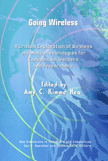Part V: Teaching and Research in My Pocket—Mobile Gadgets and Portable Practices
Part V begins with Clay Spinuzzi's "The Genie's out of the Bottle: Leveraging Mobile and Wireless Technologies in Qualitative Research" in which he uses the now familiar narrative of the blogosphere's current threat to the newspaper industry to theorize that a similar threat looms for qualitative academic research, and by comparing the qualitative researcher's process with that of the journalist's process, he makes a convincing case.
Rather than taking a defensive stance, however, as much of the newspaper industry has done, Spinuzzi proposes seeing this as an opportunity to get subjects more involved in the process of research production:
we can come to terms with the fact that different inscriptions and different processes can result in different realities being enacted, and that our participants can and will produce their own inscriptions. If coordinated, this work can result in a "virtual singularity," a settlement that everyone can live with. But that settlement hinges on letting the other stakeholders speak for themselves. (p. 264-5)
In other words, because the people we are studying—or the people involved in the subject matter/event/context we are studying—have their own points of view, and because networked computers eliminate any exclusive control of which story reaches the public, we have an opportunity to work with our subjects to tell a more complete story, one that depends neither solely on the researcher's perspective, nor the false unsituated, "objective" perspective from which most research pretends to be written.
In "Winged Words: On the Theory and Use of Internet Radio," Dene Grigar and John Barber present possibilities for the use of aurality in helping our students come to a rhetorical and critical perspective on communication media. Like a lot of theory that has dealt with the blind spots created by the academic culture's privileging of print media, Barber and Grigar's article provides new ways of engaging our students with literacy and language. They provide examples of internet radio assignments which "speak to analyses and critical and self-reflective evaluation" by engaging in comparative studies in media, which engage with the same rhetorical concepts with which we currently ask our students to engage when we consider questions of genre (p. 296).
Further, the dimension of aurality "adds exciting prospects for multimedia in that it allows additional ways both to examine the intent behind a speaker's words and to encourage a more direct connection between the spoken word and its printed form" (p. 287). In other words, to confine our uses of technology merely to the visual, we are leaving out the important rhetorical cannon of delivery, and the authors even point out how use of internet radio can be made use of in a "digital media and rhetoric course that explores new media studies, classical rhetoric, and communication arts" (p. 285). Though Grigar and Barber envision this course in the upper-division (based as it is on a graduate course taught be Grigar), there is nothing that says the same kind of course couldn't take place in a first-year writing classroom.
Part V closes with Lisa Meloncon Posner and Beth Martin's "Dancing with the iPod: Exploring the Mobile Landscape of Composition Studies." In this chapter, Posner and Martin extend the metaphors of space and place that have become common in the field of composition by applying what cultural geography calls landscape, and more particularly, what these geographers call "mobile landscape." It is mobile because we bring various interpretations to reading these landscapes as we move from landscape to landscape. What Posner and Martin find productive in the mobile landscape is that it
affords the teacher and student the opportunity to create, view, compose, construct, and participate in learning environments that are portable, interactive, and individually created to address the diversity of the students and to suit the pedagogical aims of the classroom. [Mobile landscapes] incorporate different "versions of the same scene." (p. 295)
So while the benefits of this metaphor, as described by the authors, seems to make sense in the context of the composition classroom, one might be left to ask how the iPod fits. Posner and Martins see the iPod as a part of the mobile landscape in which our students write, and make the case that its inclusion can disrupt the binary between the real world and the classroom. They then demonstrate this disruption by "reading" the iPod from three different perspectives: as a "technology device, social phenomenon, and educational tool."
What emerges from their readings is an opportunity to use the iPod, or any mobile device traditionally thought to be as something outside of the classroom, as a way to interrogate the technology we are increasingly integrating into our classrooms and lives, often without notice.
